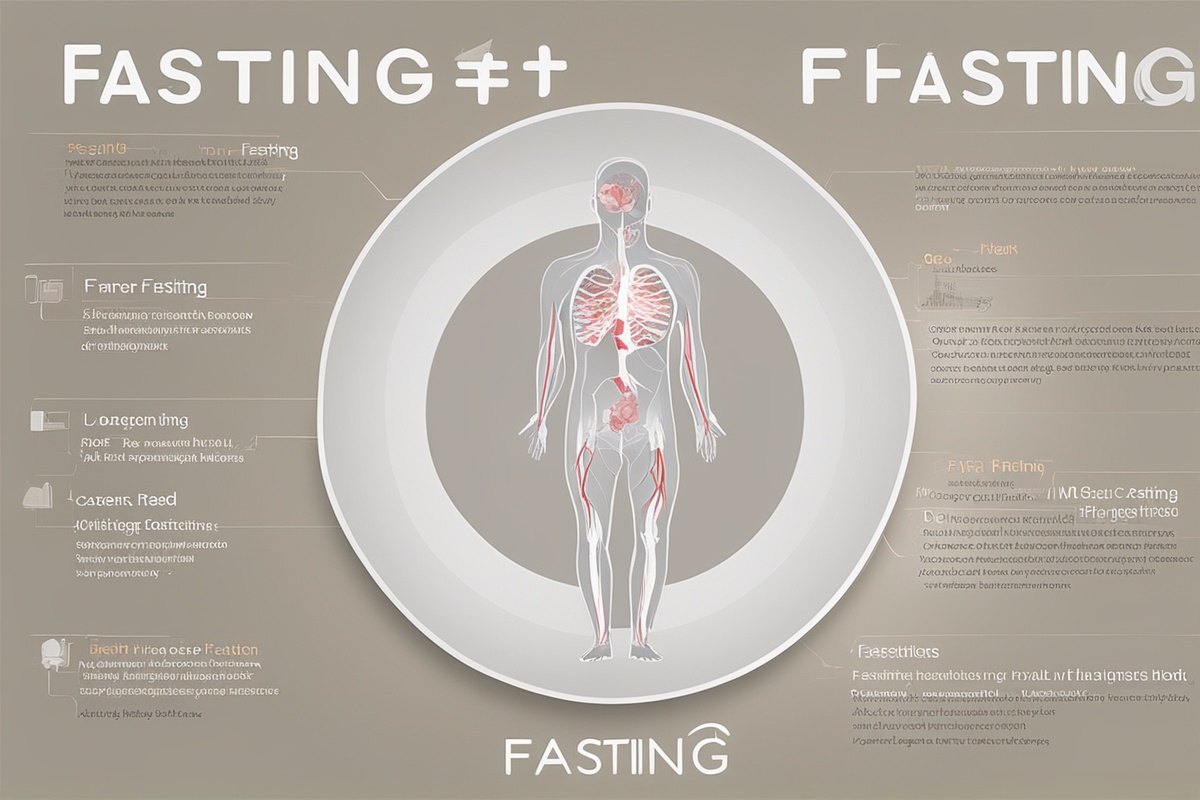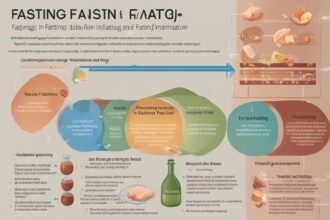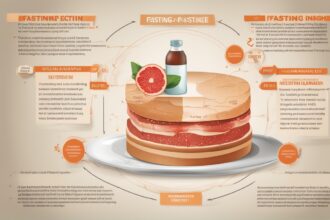Hey there, health enthusiasts! If you’ve been exploring ways to boost your wellness naturally, you’ve likely stumbled across the concept of fasting. It’s not just a trend—it’s a powerful tool with deep roots in human history and a growing body of scientific support. In this comprehensive fasting guide, we’re diving into one of fasting’s most exciting benefits: its potential to reduce inflammation. Chronic inflammation is often called the “silent killer” behind many modern diseases, from heart conditions to autoimmune disorders. So, how does fasting help tame this internal fire? Let’s unpack the science, explore practical fasting tips, and see how you can integrate this practice into your life for better health. Stick with me as we break it all down!
What Is Inflammation and Why Does It Matter?
Before we get into how fasting can help, let’s clarify what inflammation is. In simple terms, inflammation is your body’s natural response to injury or infection. Think of it as your immune system’s way of saying, “Hey, we’ve got a problem here!” Acute inflammation—like the redness and swelling from a cut—is helpful and temporary. However, chronic inflammation is a different beast. It’s a low-grade, persistent state that can silently damage tissues and contribute to conditions like diabetes, arthritis, and even cancer (Ridker, 2017). Stress, poor diet, and sedentary lifestyles are common culprits behind this ongoing inflammation. That’s where fasting comes in as a potential game-changer in your health toolkit. By incorporating strategies from this fasting guide, you might just give your body the reset it needs to fight back.
The Science Behind Fasting and Inflammation
Now, let’s geek out a bit on the science. Fasting, whether it’s intermittent fasting (IF), time-restricted eating, or longer water fasts, triggers fascinating changes in your body. One key mechanism is autophagy—a cellular “cleanup” process where your body breaks down and recycles damaged cells. Studies suggest that autophagy, which ramps up during fasting, can reduce inflammatory markers by clearing out cellular debris that might otherwise trigger immune responses (Bagherniya et al., 2018). Additionally, fasting lowers levels of pro-inflammatory cytokines—molecules that fuel inflammation—while boosting anti-inflammatory compounds (Faris et al., 2012). It also shifts your body into ketosis, a state where you burn fat for fuel, producing ketones that have been shown to dampen inflammation (Youm et al., 2015). This fasting guide isn’t just about skipping meals—it’s about harnessing these biological shifts for real health gains.
Different Fasting Methods to Combat Inflammation
Not all fasting is created equal, and part of mastering this fasting guide is finding a method that fits your lifestyle. Here are some popular approaches that research links to reduced inflammation:
- Intermittent Fasting (16/8 Method): Fast for 16 hours and eat during an 8-hour window. This method is beginner-friendly and has been shown to lower inflammatory markers in as little as a few weeks (Patterson & Sears, 2017).
- 5:2 Diet: Eat normally for 5 days a week, then restrict calories to 500–600 on 2 non-consecutive days. It’s less about timing and more about caloric reduction, which can ease systemic inflammation.
- Time-Restricted Eating: Limit eating to a specific window (like 12 pm to 6 pm) daily. This aligns with your body’s circadian rhythm, potentially reducing inflammation tied to metabolic stress.
- Water fasting: Consume only water for 24–72 hours (under medical supervision for longer periods). Short-term water fasts can trigger deep anti-inflammatory effects but aren’t for everyone.
Each method offers unique benefits, so experiment to see what works best for your body and consult a healthcare provider if you’re new to fasting or have underlying conditions.
Practical Tips to Start Fasting for Inflammation Control
Ready to put this fasting guide into action? Starting a fasting routine doesn’t have to be intimidating. It’s all about easing in, listening to your body, and setting yourself up for success. I’ve been there—feeling hangry and overwhelmed at first—but with a few tweaks, fasting became a sustainable part of my wellness journey. Here are some actionable tips to help you reduce inflammation through fasting:
- Start Small: If you’re new to fasting, begin with a 12-hour overnight fast (e.g., stop eating at 7 pm and eat again at 7 am). Gradually extend the fasting window as you feel comfortable.
- Stay Hydrated: Drink plenty of water during fasting periods to support detoxification and prevent dehydration, which can worsen inflammation.
- Focus on Nutrient-Dense Meals: When you do eat, prioritize anti-inflammatory foods like leafy greens, fatty fish, nuts, and berries to complement fasting’s effects.
- Avoid Overeating: Breaking a fast with a huge, heavy meal can spike inflammation. Opt for light, balanced meals to ease back into eating.
- Track Your Progress: Keep a journal to note how you feel during and after fasting. Look for signs of reduced inflammation, like less joint pain or better energy.
Remember, consistency matters more than perfection. Even small fasting windows can yield benefits over time if you stick with them.
Who Should Be Cautious with Fasting?
While fasting can be a powerful tool in this fasting guide for reducing inflammation, it’s not a one-size-fits-all solution. Certain groups should approach fasting with caution or avoid it altogether. Pregnant or breastfeeding women, for instance, need consistent nutrition and should steer clear of restrictive practices. People with eating disorders, diabetes, or other chronic conditions should consult a doctor before starting any fasting regimen, as it could interfere with medications or blood sugar levels (Trepanowski & Bloomer, 2010). If you’re unsure, a quick chat with a healthcare professional can help you tailor fasting to your needs. Safety first—always!
Long-Term Benefits and Lifestyle Integration
Beyond taming inflammation, fasting offers a host of long-term perks when integrated thoughtfully into your life. Research shows it may improve insulin sensitivity, support weight management, and even enhance brain health—all of which tie back to lower inflammation (Longo & Mattson, 2014). The key to reaping these rewards is making fasting a sustainable habit, not a crash diet. Pair it with other anti-inflammatory lifestyle habits like regular movement, stress management through meditation, and quality sleep. Think of this fasting guide as a starting point to build a holistic approach to wellness. Over time, fasting can become second nature, helping you feel lighter, sharper, and more in tune with your body’s needs.
As we wrap up, let’s reflect on the incredible potential of fasting to combat inflammation and elevate your health. This fasting guide has walked you through the science, the methods, and the practical steps to get started. Whether you’re drawn to intermittent fasting or a short water fast, the evidence is clear: giving your body a break from constant digestion can work wonders for calming chronic inflammation. I’ve seen firsthand how fasting can shift energy levels and even reduce nagging aches, and I’m excited for you to experience it too. Take it slow, stay curious, and remember that small changes compound into big results. Have questions or personal fasting stories? Drop them in the comments—I’d love to hear how this journey unfolds for you!
References
- Bagherniya, M., Butler, A. E., Barreto, G. E., & Sahebkar, A. (2018). The effect of fasting or calorie restriction on autophagy induction: A review of the literature. Ageing Research Reviews, 47, 183–197.
- Faris, M. A., Kacimi, S., Al-Kurd, R. A., Fararjeh, M. A., Bustanji, Y. K., Mohammad, M. K., & Salem, M. L. (2012). Intermittent fasting during Ramadan attenuates proinflammatory cytokines and immune cells in healthy subjects. Nutrition Research, 32(12), 947–955.
- Cell Metabolism, 19(2), 181–192.
- Patterson, R. E., & Sears, D. D. (2017). Metabolic effects of intermittent fasting. Annual Review of Nutrition, 37, 371–393.
- Ridker, P. M. (2017). From C-reactive protein to interleukin-6 to interleukin-1: Moving upstream to identify novel targets for atheroprotection. Circulation Research, 118(1), 145–156.
- Trepanowski, J. F., & Bloomer, R. J. (2010). The impact of religious fasting on human health. Nutrition Journal, 9, 57.
- Youm, Y. H., Nguyen, K. Y., Grant, R. W., Goldberg, E. L., Bodogai, M., Kim, D., … & Dixit, V. D. (2015). The ketone metabolite β-hydroxybutyrate blocks NLRP3 inflammasome-mediated inflammatory disease. Nature Medicine, 21(3), 263–269.






